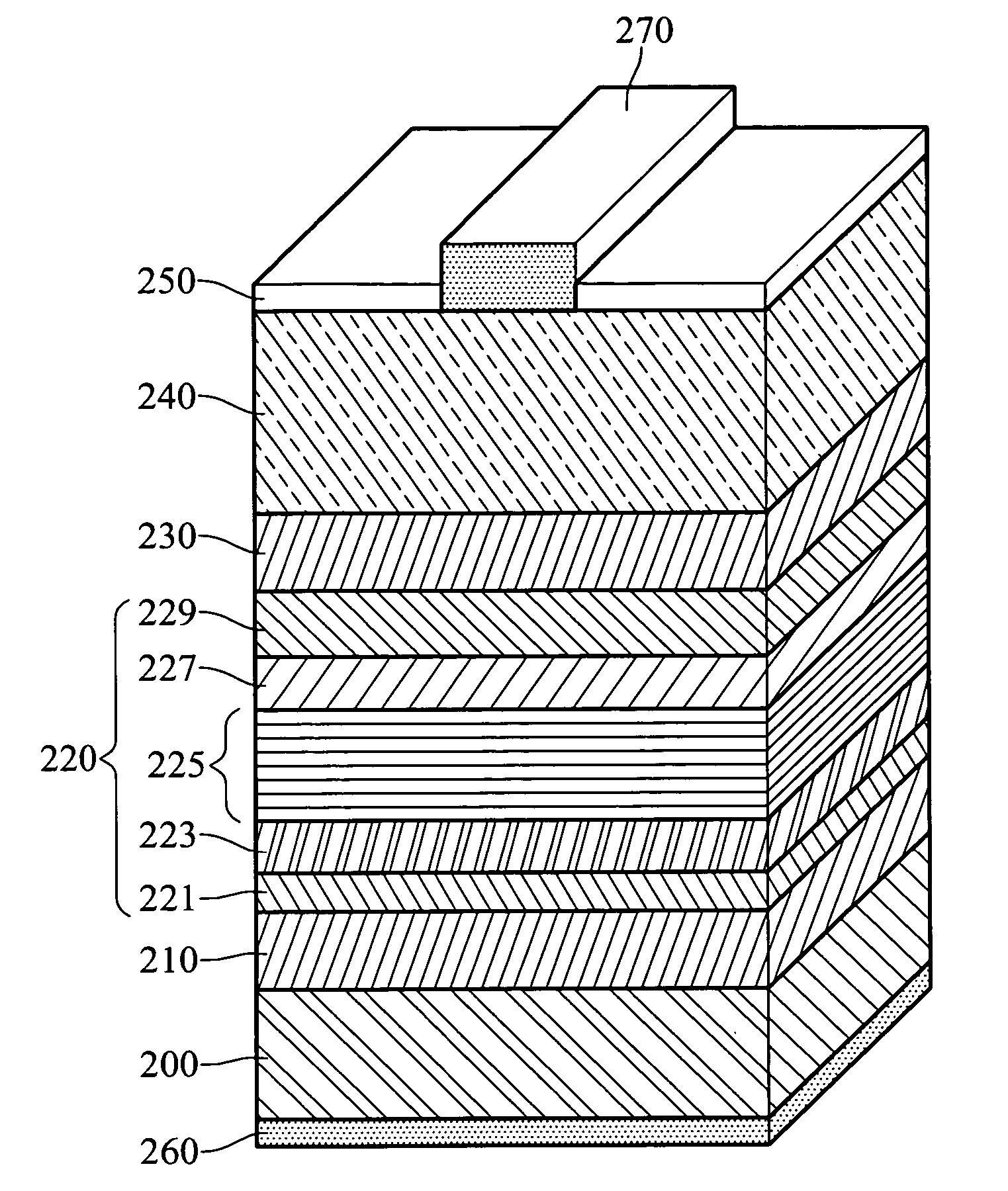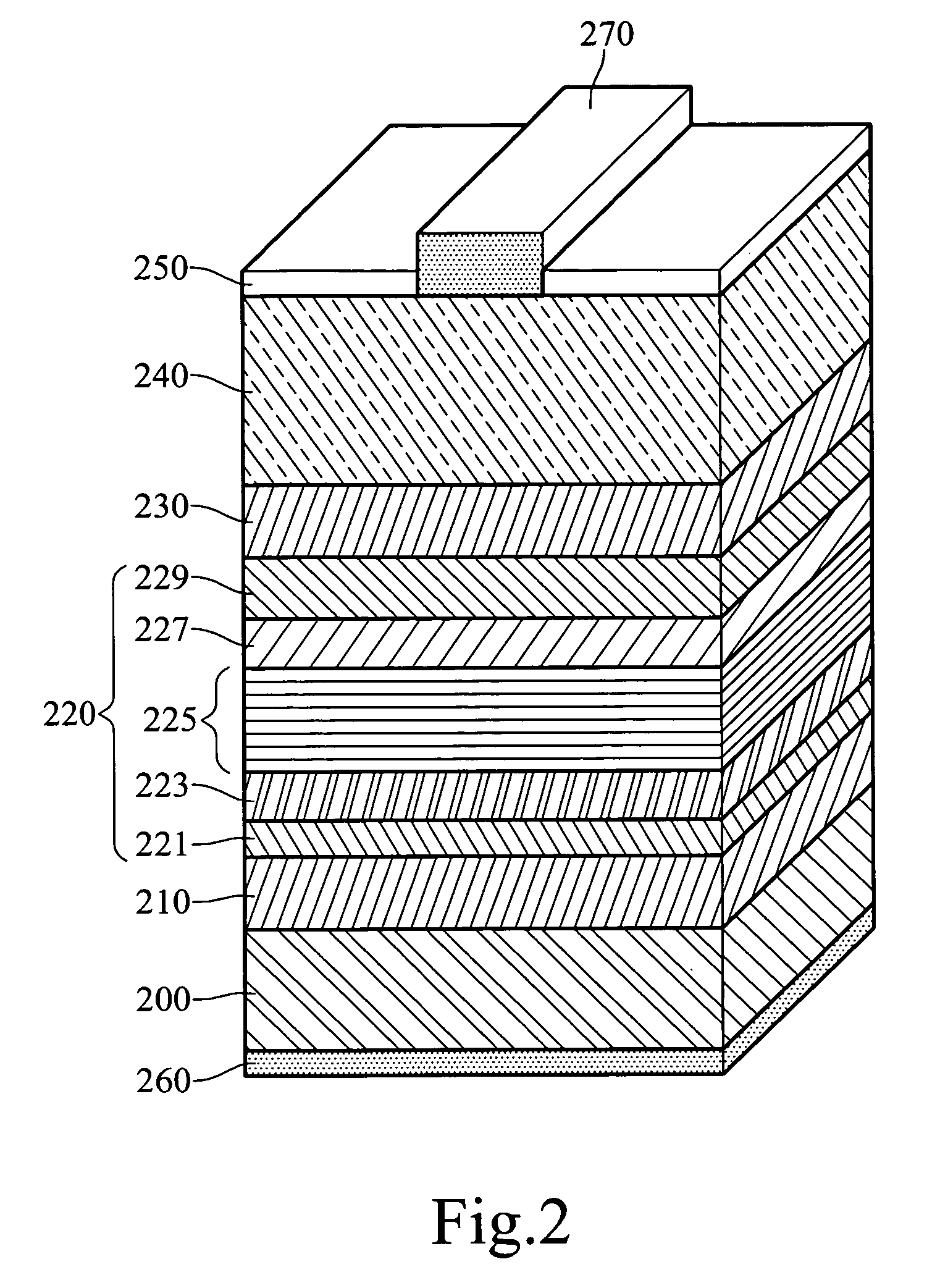Solar cell with superlattice structure and fabricating method thereof
a solar cell and superlattice technology, applied in the field of solar cells, can solve the problems of low energy conversion efficiency of silicon-based solar cells, poor light absorption of silicon solar cells, and material stacking, and achieve the effects of high carrier mobility, long diffusion length, and convenient storag
- Summary
- Abstract
- Description
- Claims
- Application Information
AI Technical Summary
Benefits of technology
Problems solved by technology
Method used
Image
Examples
Embodiment Construction
[0022]Specific embodiments will be provided to illustrate the content of the present invention in detail with reference to drawings. The symbols mentioned in the specification correspond to the symbols in the figures.
[0023]The present invention provides a solar cell with a superlattice structure, which includes a superlattice structure between the base and the emitter of the middle cell of the triple junction solar cell.
[0024]The aforementioned superlattice structure is, for example, a GaAsN / GaInAs superlattice structure, a GaAsN / GaSbAs superlattice structure, or a GaAsN / GaInSbAs superlattice structure.
[0025]When the aforementioned triple junction solar cell is, for example, a GaInP / GaAs / Ge, an AlGaAs / GaAs / Ge, an AlGaInP / GaAs / Ge, a GaInP / GaInAs / Ge, an AlGaAs / GaInAs / Ge, or an AlGaInP / GaInAs / Ge triple junction solar cell, the middle cell is a GaAs or a GaInAs middle cell. The base of the middle cell is a p-type or n-type GaAs, or a p-type or n-type GaInAs. The emitter is a p-type or n...
PUM
 Login to View More
Login to View More Abstract
Description
Claims
Application Information
 Login to View More
Login to View More - R&D
- Intellectual Property
- Life Sciences
- Materials
- Tech Scout
- Unparalleled Data Quality
- Higher Quality Content
- 60% Fewer Hallucinations
Browse by: Latest US Patents, China's latest patents, Technical Efficacy Thesaurus, Application Domain, Technology Topic, Popular Technical Reports.
© 2025 PatSnap. All rights reserved.Legal|Privacy policy|Modern Slavery Act Transparency Statement|Sitemap|About US| Contact US: help@patsnap.com



